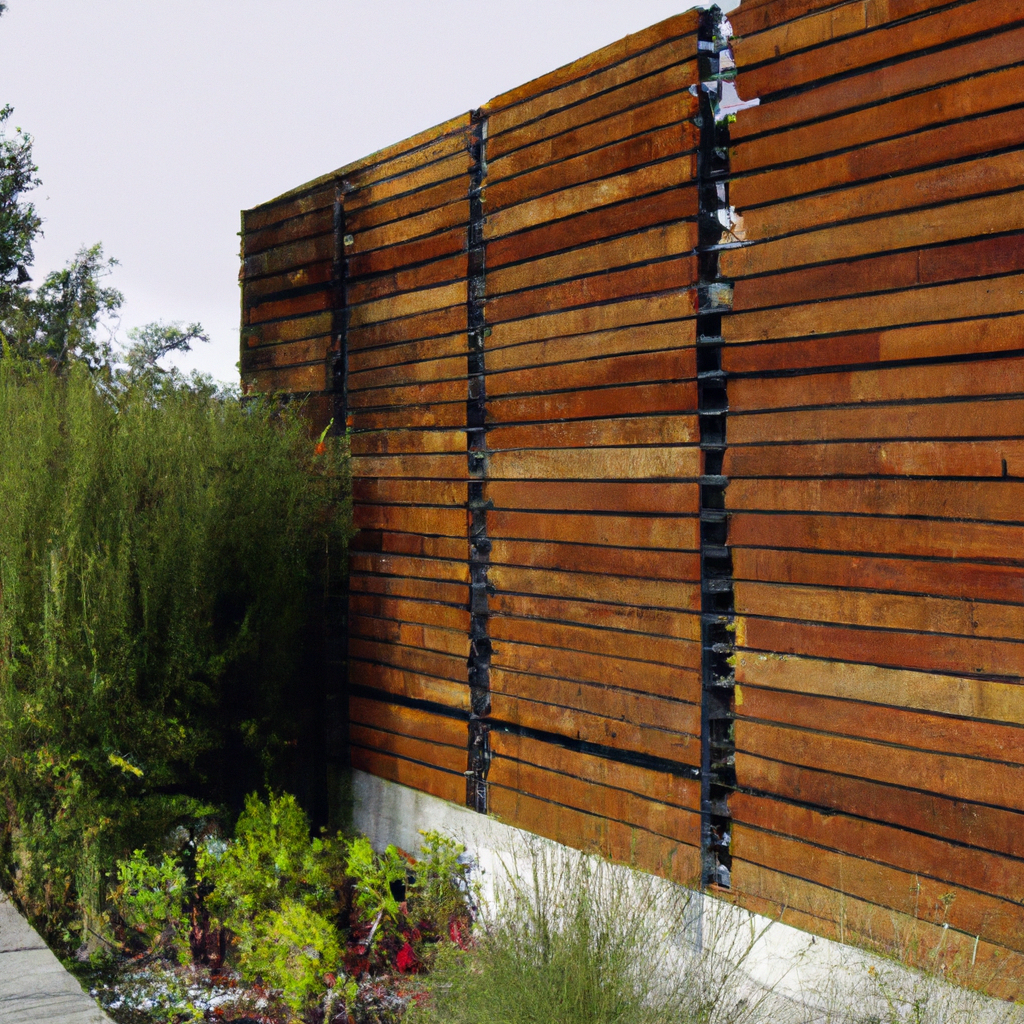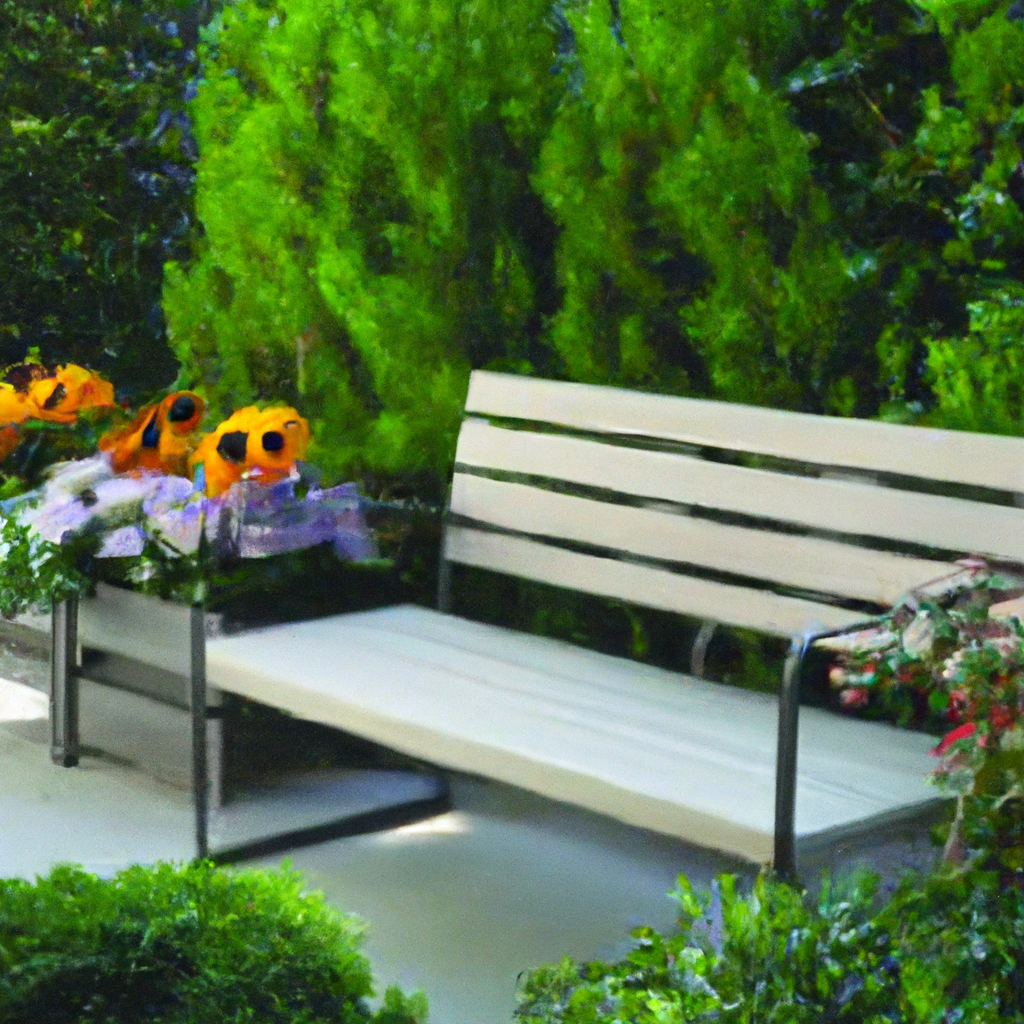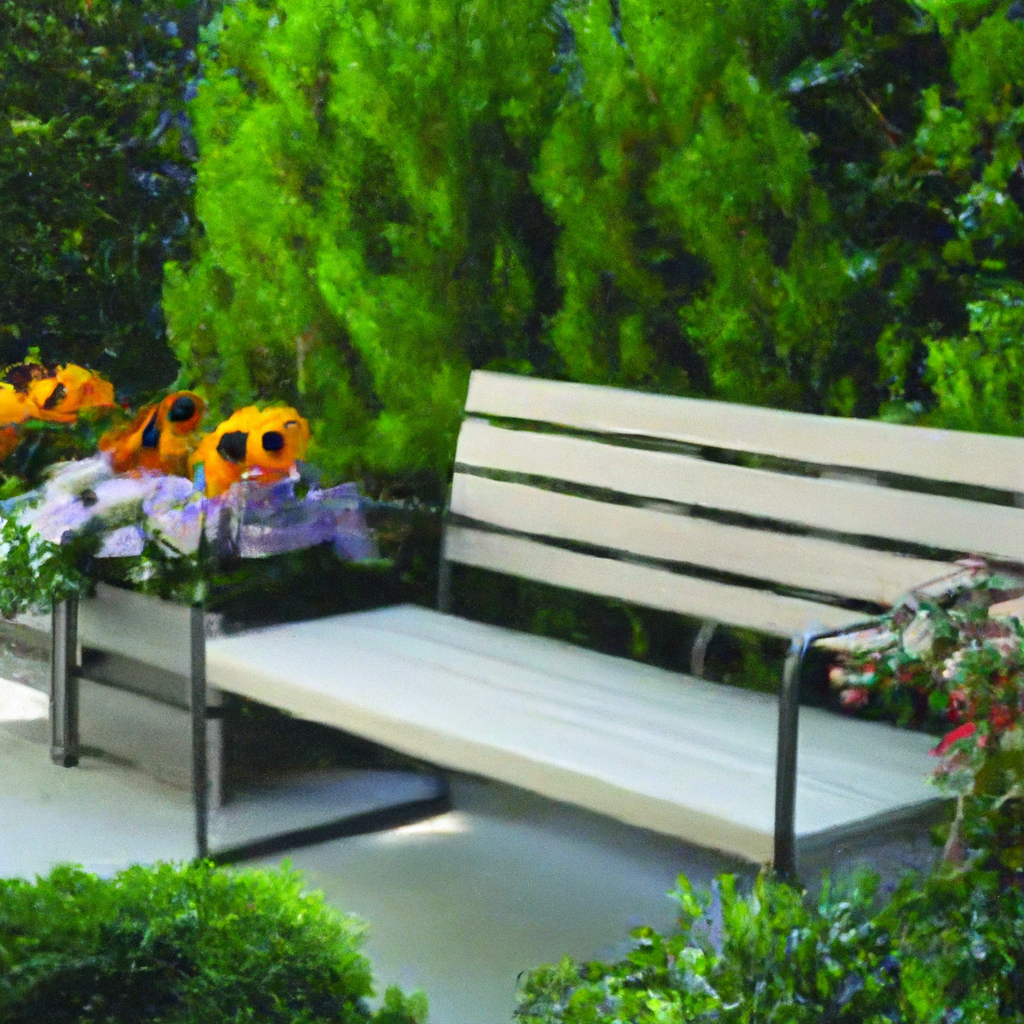Looking to expand your blog dedicated to fences? With the goal of providing reliable information that resonates with your audience, you want to delve into the intricacies of different fence types, sizes, shapes, materials, and their suitability for specific needs. By exploring the characteristics and advantages of various fence types, discussing their durability, maintenance requirements, and aesthetic appeal, and addressing factors like property size and architectural considerations, you aim to provide readers with valuable knowledge and practical advice. By conducting thorough research to identify the interests and preferences of your target audience, you can ensure that your blog becomes the go-to resource for all things fence-related.

Designing Fences with Integrated Seating and Outdoor Spaces
1. Introduction
When it comes to designing fences for your outdoor spaces, incorporating integrated seating can add a unique and functional element to your property. Whether you have a spacious backyard, a petite patio, or a cozy rooftop, integrating seating into your fence design can elevate the overall aesthetic appeal while providing a comfortable and inviting environment for you, your family, and your guests.
In this article, we will explore the benefits of integrating seating and outdoor spaces into your fence design, discuss the factors to consider during the design process, explore suitable types of fences, and delve into the materials, size, shape, maintenance, and durability considerations. Additionally, we will discuss how integrated seating can enhance privacy and security, as well as contribute to the overall aesthetic appeal of your property.
2. Benefits of Integrated Seating and Outdoor Spaces
Integrating seating and outdoor spaces into your fence design offers numerous benefits. Firstly, it optimizes the use of your outdoor area by providing a comfortable seating arrangement along with the boundary of your property. This allows you to maximize your space, especially in smaller yards where every square inch counts.
Secondly, integrated seating encourages outdoor living and socialization. It creates a designated area for relaxation, conversation, and entertainment, allowing you to enjoy the fresh air and the beauty of your surroundings.
Moreover, integrated seating offers convenience. Instead of having to bring out chairs or furniture every time you want to spend time outdoors, your seating is already built into the fence. This eliminates the need for additional storage space and makes it easier to use your outdoor area spontaneously.
3. Factors to Consider in Designing Fences with Integrated Seating and Outdoor Spaces
Designing fences with integrated seating and outdoor spaces requires careful consideration of several factors. One of the most important considerations is the purpose you envision for your outdoor area. Are you looking for a cozy space for relaxation, a social gathering spot, or a functional seating arrangement for dining? Determining the primary purpose will guide your design decisions.
Another factor to consider is the size and shape of your outdoor area. The available space will determine the dimensions of your integrated seating and the overall layout of your fence. It’s important to ensure that the seating area doesn’t overwhelm the rest of the outdoor space and that it allows for easy movement and flow.
Additionally, you should take into account the architectural style of your property. The fence design should complement the existing aesthetic and blend seamlessly with the overall look and feel of your home. This can be achieved through the choice of materials, colors, and design elements.
Lastly, it’s crucial to consider the climate and weather conditions in your area. Certain materials and finishes may be more suitable for durability and maintenance in extreme weather conditions. Assessing these factors will help you make informed decisions during the design process.
4. Types of Fences Suitable for Integrated Seating and Outdoor Spaces
Several types of fences lend themselves well to integrated seating and outdoor spaces. Let’s explore some of these options:
a. Wooden Fences:
Wooden fences offer a classic and natural aesthetic that can create a warm and inviting ambiance in your outdoor area. They can be easily customized to accommodate integrated seating, either by incorporating built-in wooden benches or attaching seating elements to the fence structure.
b. Vinyl Fences:
Vinyl fences are known for their durability and low maintenance requirements. They can be designed with integrated seating by attaching vinyl benches or installing seating elements between fence posts. Vinyl fences also come in various colors and styles, allowing you to personalize the design according to your preferences.
c. Metal Fences:
Metal fences, such as aluminum or steel, provide a sleek and modern look. These fences can be designed with integrated seating by installing metal benches or attaching seating elements to the fence structure. Metal fences are known for their durability and can withstand various weather conditions.
d. Stone or Brick Fences:
Stone or brick fences offer a timeless and elegant appearance to your outdoor space. Integrated seating can be incorporated by building stone or brick benches along the length of the fence or by attaching seating elements to the fence structure. These fences add a touch of sophistication to any property.
5. Materials for Designing Fences with Integrated Seating and Outdoor Spaces
Choosing the right materials for your fence with integrated seating is essential to ensure durability, aesthetics, and functionality. Here are some materials commonly used:
a. Wood:
Wood is a popular choice for fence construction due to its natural beauty and versatility. It can be easily shaped and modified to incorporate integrated seating. However, wood requires regular maintenance, such as staining or painting, to protect it from the elements.
b. Vinyl:
Vinyl fences are highly durable and require minimal maintenance. They come in a variety of colors and styles, allowing for customization. Vinyl also has the advantage of being resistant to rot, insects, and water damage, making it suitable for outdoor environments.
c. Metal:
Metal fences, such as aluminum or steel, are known for their strength and longevity. They can withstand harsh weather conditions without compromising their structural integrity. Metal fences can be designed with integrated seating by attaching benches or seating elements to the fence structure.
d. Stone or Brick:
Stone or brick fences offer a timeless and sophisticated look. They are durable and require little maintenance. These materials can be shaped to include integrated seating by building benches along the fence or installing seating elements.
When choosing the materials, consider factors such as style, durability, maintenance requirements, and budget to ensure that the fence with integrated seating suits your needs and preferences.

6. Size and Shape Considerations for Designing Fences with Integrated Seating and Outdoor Spaces
Determining the appropriate size and shape for your fence with integrated seating is crucial for creating a functional and aesthetically pleasing outdoor space. Here are some considerations to keep in mind:
a. Available Space:
Evaluate the available space in your outdoor area to determine the dimensions of your integrated seating. Ensure that it provides enough room for comfortable seating and movement.
b. Seating Capacity:
Consider the number of people you expect to accommodate on a regular basis. This will help determine the length and layout of your integrated seating. You may also want to include additional seating options, such as movable chairs or stools, for flexibility.
c. Shape and Layout:
Choose a shape and layout that best suits your outdoor area and the intended purpose of the seating. Straight benches, L-shaped configurations, or circular seating arrangements can provide different seating dynamics and aesthetics.
d. Ergonomics and Comfort:
Pay attention to the ergonomics of your integrated seating. Ensure that the backrest height, seat depth, and angle of the seating elements provide optimal comfort for all users.
By considering these size and shape factors, you can design a fence with integrated seating that harmonizes with your outdoor area while maximizing functionality and comfort.
7. Maintenance and Durability of Fences with Integrated Seating and Outdoor Spaces
When designing fences with integrated seating and outdoor spaces, it’s essential to consider maintenance and durability factors to ensure the longevity and usability of your investment.
a. Regular Inspections:
Perform regular inspections of your fence to identify any signs of wear, damage, or loose components. Prompt repairs or maintenance can prevent further deterioration and extend the lifespan of your fence.
b. Cleaning:
Regularly clean your fence and seating elements to remove dirt, debris, and stains. Different materials may require specific cleaning methods, so be sure to follow the manufacturer’s recommendations.
c. Sealant or Coating:
Consider applying a sealant or protective coating to your fence and seating elements. This can help prevent damage from the sun, moisture, and other elements, ensuring their longevity.
d. Maintenance Schedule:
Create a maintenance schedule to keep track of routine tasks, such as painting, staining, or sealing. Following a regular maintenance routine will help preserve the aesthetics and functionality of your fence with integrated seating.
8. Enhancing Privacy and Security with Fences and Integrated Seating
Privacy and security are important considerations when designing fences with integrated seating and outdoor spaces. Here are some ways to enhance privacy and security:
a. Height and Solidity:
Opt for taller fences that provide increased privacy and act as a visual barrier. Solid panels, such as wooden or vinyl panels, can prevent prying eyes and create a secure environment.
b. Railing and Lattice:
Incorporate decorative railing or lattice panels into your fence design. These elements maintain privacy while allowing airflow and light to pass through. They can also add an aesthetic touch to your integrated seating area.
c. Landscaping:
Use landscaping elements, such as shrubs, trees, or climbing plants, to create a natural privacy screen around your fence and seating area. This provides an additional layer of privacy while beautifying your outdoor space.
d. Access Control:
Consider adding gates or locking mechanisms to control access to your outdoor area. This enhances security and ensures that only authorized individuals can enter the space.
By incorporating these privacy and security measures into your fence with integrated seating design, you can create a tranquil and secure environment for your outdoor enjoyment.
9. Creating Aesthetic Appeal with Fences and Integrated Seating
Designing fences with integrated seating and outdoor spaces opens up endless possibilities for creating aesthetic appeal. Here are some tips to enhance the visual impact of your fence:
a. Color and Finish:
Choose colors and finishes that complement your property’s architectural style and outdoor surroundings. A harmonious color palette can create a cohesive and visually pleasing aesthetic.
b. Decorative Accents:
Incorporate decorative accents, such as carved or embossed detailing, into your fence design. These elements can add a touch of elegance and uniqueness to your outdoor area.
c. Lighting:
Install outdoor lighting that highlights your fence and integrated seating during the evening hours. This not only enhances safety but also creates a warm and inviting ambiance.
d. Planters and Greenery:
Integrate planters or living walls into your fence design to incorporate greenery and natural elements. This softens the overall appearance and adds a refreshing touch to the space.
By paying attention to these aesthetic considerations, you can create a visually appealing and inviting outdoor area that reflects your personal style and enhances the overall beauty of your property.
10. Steps to Design and Install Fences with Integrated Seating and Outdoor Spaces
Designing and installing fences with integrated seating and outdoor spaces can be a rewarding project. Here are some steps to guide you through the process:
a. Determine Purpose and Needs:
Define the primary purpose of your fence and seating area. Consider your specific needs, such as privacy, security, or entertainment, to guide the design decisions.
b. Assess Outdoor Space:
Evaluate the available outdoor space to determine the dimensions and layout of your integrated seating. Consider the size, shape, and existing features of the area.
c. Choose the Suitable Fence Type and Materials:
Select a fence type and materials that align with your aesthetic preferences, maintenance requirements, and budget. Consider factors such as durability, weather resistance, and customization options.
d. Plan the Design:
Sketch a rough design layout that incorporates the integrated seating, taking into account the size, shape, and functionality. Consider any additional design elements you want to include, such as decorative accents or lighting.
e. Seek Professional Assistance:
If you’re unsure about the design or installation process, it’s recommended to consult with a professional fence contractor or landscape designer. They can provide valuable expertise and ensure that the project is executed correctly.
f. Obtain Necessary Permits:
Depending on your local regulations, you may need to obtain permits before installing your fence. Check with your municipality to ensure compliance with any applicable rules or regulations.
g. Install the Fence and Seating:
Follow the design and installation plans to build your fence with integrated seating. This may involve tasks such as digging post holes, assembling panels, attaching seating elements, and securing the fence in place.
h. Test and Adjust:
After the installation, test the functionality and comfort of the integrated seating. Make any necessary adjustments to ensure optimal comfort and usability.
i. Add Finishing Touches:
Apply any desired finishes, such as staining or painting, to protect and enhance the appearance of your fence and seating elements. Install any additional decorative or functional elements, such as lighting fixtures or planters.
j. Enjoy Your Outdoor Space:
Once your fence with integrated seating is complete, it’s time to enjoy your newly transformed outdoor area. Invite friends and family, relax, and make lasting memories in your beautiful, functional, and comfortable space.
11. Conclusion
Designing fences with integrated seating and outdoor spaces can be an exciting and rewarding endeavor. By considering the purpose, size, shape, materials, maintenance, and aesthetics, you can create a fence that not only enhances the functionality and security of your outdoor area but also contributes to its visual appeal.
Integrating seating into your fence design offers numerous benefits, including optimizing space utilization, encouraging outdoor living, and providing convenience. With the right materials and proper maintenance, your fence with integrated seating can withstand the test of time and weather.
Enhancing privacy and security, as well as creating aesthetic appeal, are crucial aspects to consider during the design process. Incorporating privacy features, decorative accents, and complementary lighting can transform your outdoor space into a tranquil haven.
By following the steps outlined in this article, you can successfully design and install a fence with integrated seating and outdoor spaces. So, get ready to enjoy the beauty and functionality of your transformed outdoor area!
Most Common Questions about Fences:
| Question | Answer |
|---|---|
| 1. What are the benefits of having a fence? | Fences offer numerous benefits, including privacy, security, boundary definition, noise reduction, and enhanced curb appeal. They can also provide safety for children and pets, deter unwanted animals, and create a sense of enclosure in your outdoor area. |
| 2. How do I choose the right type of fence for my needs? | Choosing the right type of fence depends on various factors such as the purpose of the fence, desired level of privacy and security, budget, maintenance requirements, and aesthetic preferences. It’s important to consider these factors and consult professionals for guidance to make an informed decision. |
| 3. Are permits required to install a fence? | Permit requirements for fence installation vary depending on local regulations and the specific characteristics of your property. It’s best to check with your municipality or homeowners’ association to determine if permits are necessary. |
| 4. How do I maintain my fence? | Fence maintenance requirements depend on the material used. However, general maintenance tasks include regularly inspecting for damage or wear, cleaning the fence, applying protective coatings or finishes when necessary, and addressing any repairs promptly. Following manufacturer’s guidelines and seeking professional assistance can help ensure proper maintenance. |
| 5. Can fences be installed on uneven terrain? | Yes, fences can be installed on uneven terrain. Options such as stepped fences, racked fences, or retaining walls can accommodate changes in elevation and maintain a straight and secure fence line. Consulting with a professional fence installer can help determine the most suitable approach for your specific terrain. |
| 6. How long does a fence typically last? | The lifespan of a fence depends on various factors, including the materials used, maintenance routines, and exposure to weather conditions. Generally, well-maintained fences can last anywhere from 15 to 50 years. It’s important to choose durable materials and follow proper maintenance practices to ensure longevity. |
| 7. Can I install a fence myself, or should I hire a professional? | The decision to install a fence yourself or hire a professional depends on your level of expertise, time availability, and the complexity of the project. While DIY installations can save money, complex projects or unfamiliar materials may require professional skills. Consulting with a professional can help you determine the best course of action for your specific circumstances. |
| 8. How tall should my fence be for privacy? | The height of a fence for privacy depends on the desired level of privacy and the local regulations. Usually, a fence height of 6 to 8 feet provides adequate privacy. However, it’s important to consult local zoning codes or homeowners’ association guidelines to ensure compliance. |
| 9. What are the most common materials used for fences? | Common fence materials include wood, vinyl, aluminum, steel, chain-link, and composite materials. Each material offers different characteristics in terms of durability, maintenance, aesthetics, and cost. Choosing the right material depends on your specific needs, preferences, and budget. |
| 10. Can fences increase my property value? | In many cases, a well-designed and properly maintained fence can enhance the curb appeal and overall perceived value of a property. However, the impact on property value can vary depending on factors such as the quality and style of the fence, neighborhood norms, and local real estate market conditions. Consulting with local real estate professionals can provide insights into the potential impact on property value. |
